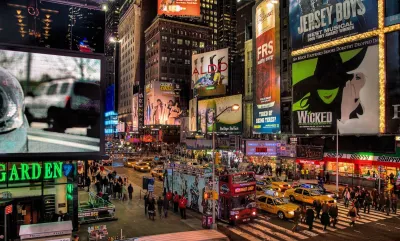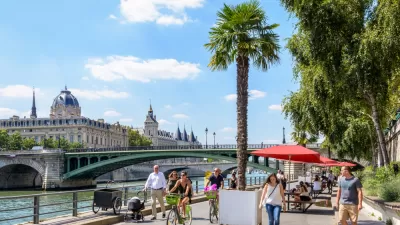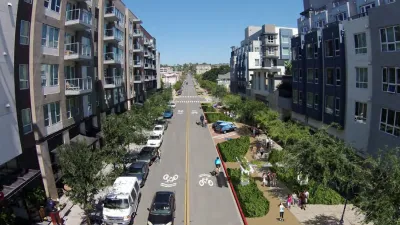Plans for compact, walkable cities often don’t address nighttime concerns like transportation and lighting, which can make neighborhoods more vibrant and safe around the clock.

How does the 15-minute city concept apply to the nighttime economy? That’s the question that an article in Cooperative City attempts to answer. According to the article, “While this concept offers solutions to several challenges such as improving quality of life, reducing social isolation, and addressing traffic and pollution, the global discussion around the 15-minute city didn’t take fully into account the nocturnal dimension of the cities.”
In many cities, transit stops running too early; nighttime lighting does not always exist; and daily needs are unavailable within a 15-minute trip after certain hours. “Increasing the quality and quantity of services and activities available after dark closer to the places where people live is a crucial aspect of urban planning.”
In Barcelona, Spain, the city is moving to provide more mobility options after 10 pm to ensure that people don’t always have to leave their own neighborhoods to access nightlife activities. “In Melbourne, the extension of the Yarra Trams—the world’s largest tram network—to operate during nocturnal hours with the Night Network, made permanent in 2017, and the Free Tram Zone in the city centre had a considerable impact in making the night-time economy more vibrant and accessible.”
Including the nighttime economy in the planning of 15-minute city strategies can also provide crucial transportation services and amenities for those workers who perform nighttime jobs. “Making the night-time economy more accessible is not just a matter of urban design, but also requires continuous adaptation of licensing and safety regulations. A stronger focus on informal spaces can contribute to making cities more liveable at night and improving access to parks and public spaces for activities that engage local youth, families, and elderly persons.”
FULL STORY: The 15-minute city at night: towards a holistic urban vision

Study: Maui’s Plan to Convert Vacation Rentals to Long-Term Housing Could Cause Nearly $1 Billion Economic Loss
The plan would reduce visitor accommodation by 25,% resulting in 1,900 jobs lost.

North Texas Transit Leaders Tout Benefits of TOD for Growing Region
At a summit focused on transit-oriented development, policymakers discussed how North Texas’ expanded light rail system can serve as a tool for economic growth.

Why Should We Subsidize Public Transportation?
Many public transit agencies face financial stress due to rising costs, declining fare revenue, and declining subsidies. Transit advocates must provide a strong business case for increasing public transit funding.

How to Make US Trains Faster
Changes to boarding platforms and a switch to electric trains could improve U.S. passenger rail service without the added cost of high-speed rail.

Columbia’s Revitalized ‘Loop’ Is a Hub for Local Entrepreneurs
A focus on small businesses is helping a commercial corridor in Columbia, Missouri thrive.

Invasive Insect Threatens Minnesota’s Ash Forests
The Emerald Ash Borer is a rapidly spreading invasive pest threatening Minnesota’s ash trees, and homeowners are encouraged to plant diverse replacement species, avoid moving ash firewood, and monitor for signs of infestation.
Urban Design for Planners 1: Software Tools
This six-course series explores essential urban design concepts using open source software and equips planners with the tools they need to participate fully in the urban design process.
Planning for Universal Design
Learn the tools for implementing Universal Design in planning regulations.
City of Santa Clarita
Ascent Environmental
Institute for Housing and Urban Development Studies (IHS)
City of Grandview
Harvard GSD Executive Education
Toledo-Lucas County Plan Commissions
Salt Lake City
NYU Wagner Graduate School of Public Service





























